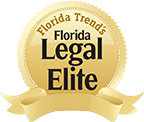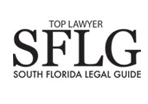Junk Science
In an attempt to incite righteous anger and induce change in the nation’s educational standards, the late Carl Sagan often lamented the American public’s profound scientific illiteracy, which by even conservative measures is estimated to include ninety percent of the population. This sobering statistic suggests that many decisions in our increasingly technological society are being made without the requisite scientific understanding — decisions that influence critical social issues from Sagan’s educational focus, to politics, to commerce. And law.
Once limited to a few high-profile courtroom battles between large corporations, scientific disputes are more common in courts today because scientific and technological advances permeate — and in fact drive — our society. As law and science converge ever-more frequently, our society is arriving at a critical juncture: Litigation raising sophisticated scientific concepts is expanding to include not only large corporations, but small businesses and even individuals, as well.
Additionally, everyday activities are subject to higher levels of legal scrutiny than ever before in areas as diverse as surfing the Internet (copyright and trademark), business conduct, land ownership (environmental impact) and eating alar on apples or breathing second-hand smoke (public health). Consequently, juries and judges are increasingly being asked to consider questions involving matters of science, which, distressingly for them (and the parties whose fates are at stake), are often completely foreign.
One complicating factor is that the void in scientific knowledge is rapidly filled with “junk science” or pseudo-science: generally facile and inaccurate explanations for phenomena with perfectly rational, if less sensational, explanations. The press, unfortunately, is generally no more scientifically informed than the public and may unwittingly provide incomplete or inaccurate information. Either in a misguided effort to be “fair” or in a deliberate attempt to improve ratings by being controversial and shocking, reporters often disseminate and perpetuate junk science by giving equal weight to “good” and “bad” science or shielding too credulous reports with an “entertainment purposes” imprimatur. The result is that many questions — but few sign posts — are raised and people are left to seek answers to the world’s mysteries without the ability to discriminate between well- and ill-founded explanations. Without the tools of scientific inquiry to aid distinctions, people accept ambitious explanations and reject perfectly good science they don’t understand.
In a courtroom, where juries (as to fact) and judges (as to law) are arbiters of disputes between parties who have failed to agree, juries are normally quite reliable. In auto accident litigation where one witness testifies that the traffic light was green and the other testifies it was red (testimony), most juries have no difficulty considering photographs of skid marks (documentary evidence) to decide which witness is most likely correct. Most jurors are personally familiar with operating automobiles, rules of the road, and various causes of skid marks. Similarly, jurors are familiar with accepted standards and procedures in restaurants, hotels, schools and work places, and have no trouble applying common sense to their review of evidence in disputes growing out of their everyday experiences in these areas. What “common sense” scientific experience, however, do jurors bring to the courtroom? What effect does scientific illiteracy have on the parties affected directly by the jurors” determinations? And what are the long-term effects on the legal process?
More than a quarter of the American public is unaware that the earth revolves around the sun. The last case affirming a jury decision that cancer could be caused by an auto accident was not 1897, but 1979. What happens, then, when jurors cannot distinguish good science from bad in their everyday experience? One way the courts try to help is judicial screening, whereby judges have the discretion to evaluate evidence and determine what the jury may hear. The opportunity to have scientific issues screened by the court before a jury considers the question differs between federal and state courts and among the fifty states. Federal courts implement a generalized guideline focusing on relevance and reliability, measured by the trial judge, who serves as a “gatekeeper” for the admissibility of expert testimony. Daubert v. Merrell Dow Pharmaceuticals, Inc., 509 U.S. 579, 113 S. Ct. 1786, 125 L.Ed. 2d 469 (1993). Florida applies the older, less liberal standard tied to “general acceptance in the scientific community,” which trial judges likewise police. Frye v. United States,293 F. 1013 (D.C. Cir 1923); Stokes v. State, 548 So. 2d 188 (Fla. 1989). If the science in question clears these hurdles, however, the jury can still have the last say.
Most court-laboratory conflicts still arise in product liability suits, personal injury actions where plaintiffs claim a specific product caused them harm. Zealous advocates may proffer “junk science” testimony on sophisticated scientific topics through experts motivated by extrinsic biases that taint their reliability. Many of these “experts” have chosen not to publish their results in scientific journals, thus preventing other scientists from testing (to prove or disprove) their hypotheses. If jurors have knowledge that one of the linchpins to scientific validity is scrutiny by other scientists and that publishing allows other scientists to repeat experiments and replicate results — or not, as the case may be — they may be able to appreciate the true significance of the “expert” with an unpublished theory. Even absent deliberate distortion, advocates and their clients, caught up in scientific cases which may take years to reach a courtroom, are inevitably so immersed in the scientific minutiae that they tend to forget that the jurors” most recent scientific lesson might have been taken from an episode of the “X-Files” television series.
It is obviously not reasonable to expect juries to be knowledgeable about all disciplines of science. Even scientists are often unaware of the rapid developments outside their own fields. But jurors, in the interest of justice, should know the basics of the scientific method — the way good science is achieved in an orderly, systematic approach to problem solving — in order to be able to evaluate whether the scientific evidence placed before them has merit. Otherwise, jurors become bewildered and, in the face of conflicting testimony by experts, lose confidence in their ability to understand the science involved and base their decision on something else.
If the jury comprehends the scientific method, peer review, and protocols established to ensure reliability and accuracy in laboratories, they will have not only a solid foundation, but also regain the confidence to resolve the issues at the heart of their deliberative process. Yet the task that sounds the simplest has the steepest slope: only two percent of Americans understand science as the development and testing of theory.
Given the general lack of scientific knowledge and judgment, attorneys — both plaintiff and defense — must take the responsibility upon themselves to provide the jury with a compass, so they can reasonably be expected to find their way. This compass is a basic understanding of the scientific method. It is safe to assume that most jurors will be in need of explanation and the rest will not mind the reminder. Inasmuch as we are firmly ensconced in the information age, it serves no good purpose to leave too many people behind. Science-related litigation, like the society whose disputes it peacefully resolves, will certainly continue to increase in sophistication. Recognizing that it will be some time before the educational system provides us with sufficiently well-informed jurors schooled in critical thought, it is incumbent upon businesses and individuals to select trial counsel who not only know both law and science well enough to adequately explain the scientific facts favorable to their clients, but also to consistently select scientifically reliable evidence and to clearly communicate to jurors the basic principles of scrutinizing scientific claims. By explaining the rules of scientific exploration clearly and concisely — how scientists pose questions, seek answers, and reach conclusions — attorneys can serve the interests of justice while advancing the law, science and society. This will not only be a great public service, but also undoubtedly will improve the credibility of the lawyer/teacher who best assumes this role.
In sum, attorney understanding of the many nuances of the science-law union, and the obligations it imposes, serves the short-term interest of fairly resolving the modern disputes of individual participants and the long-term interest of setting proper legal precedents and improving society’s ability to discern the impossible from the probable, the real from the imagined, and the accurate from the inaccurate.
Ivonne Prieto, Esq. is an associate at Ver Ploeg & Marino, P.A., a civil trial practice firm specializing in complex commercial and scientific litigation, attorney negligence, and all types of insurance disputes with special emphasis in matters of coverage and bad faith. She holds a Master of Science Degree in Molecular Cellular & Developmental Biology and is a former law clerk to United States District Court Judge Edward B. Davis.
Brenton Ver Ploeg, Esq. holds a Bachelor of Science degree from Northwestern University and graduated from Hastings College of the Law, University of California, in 1973.
Share




